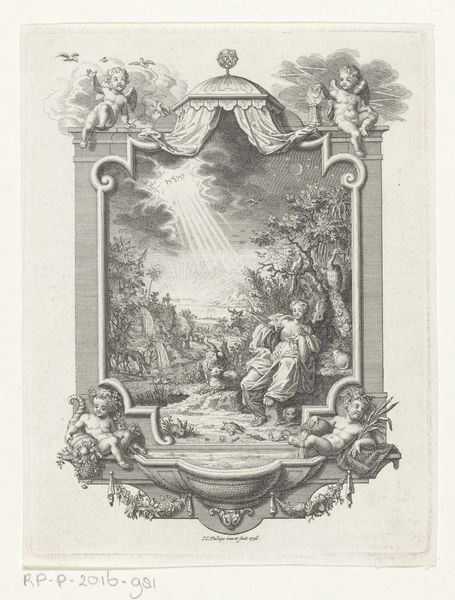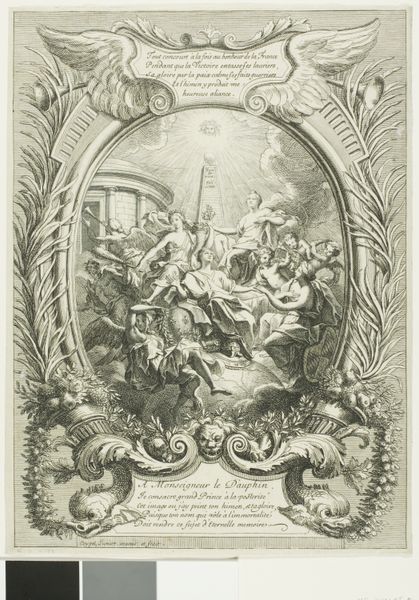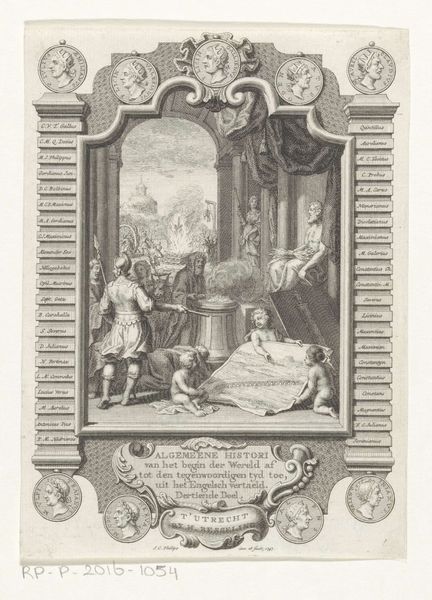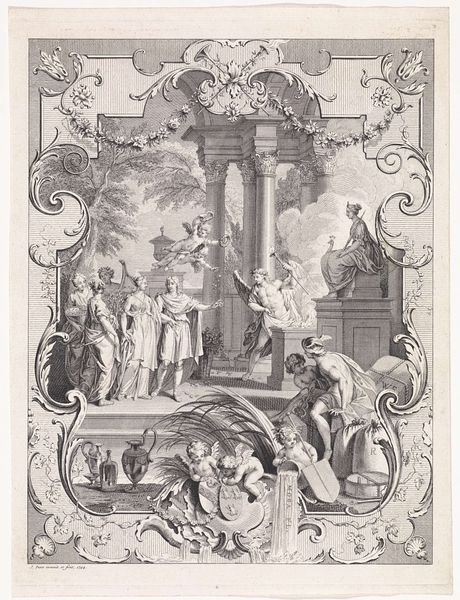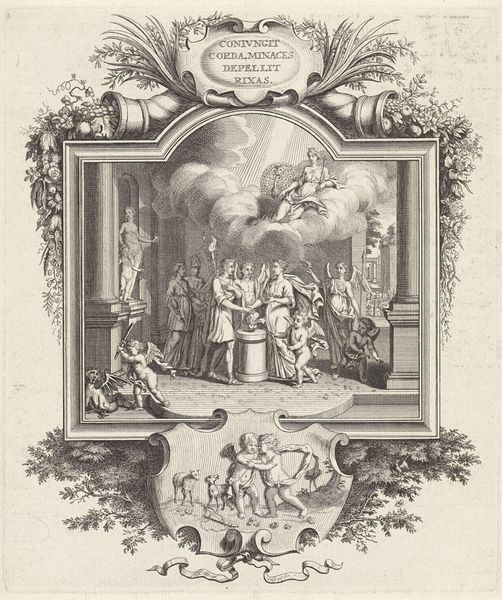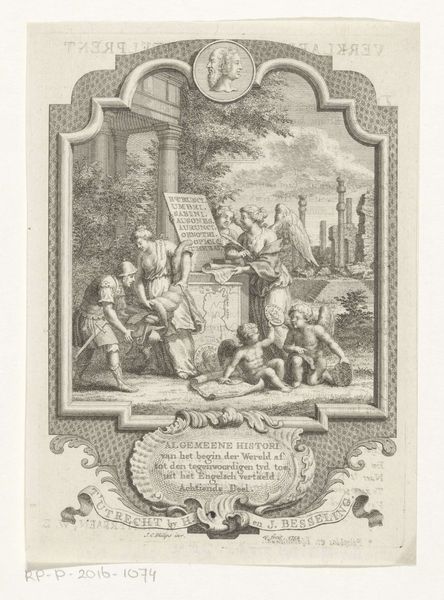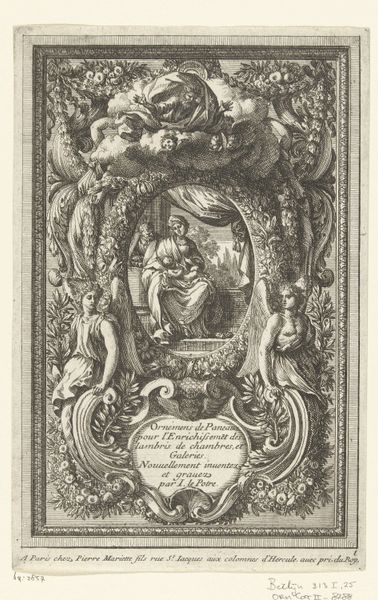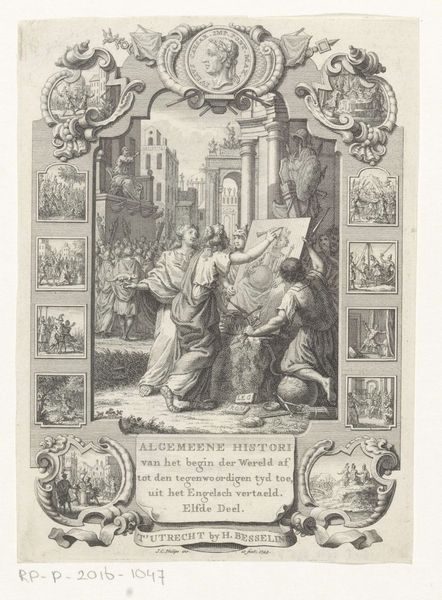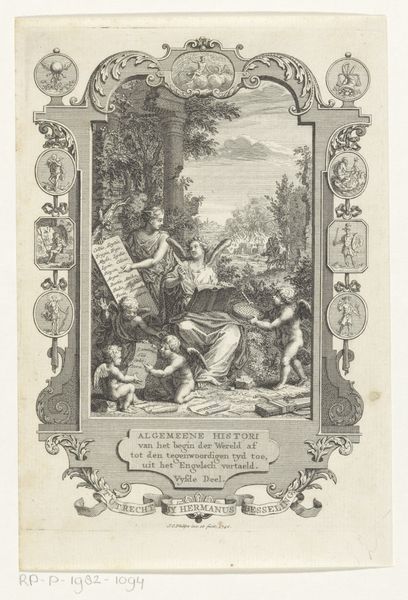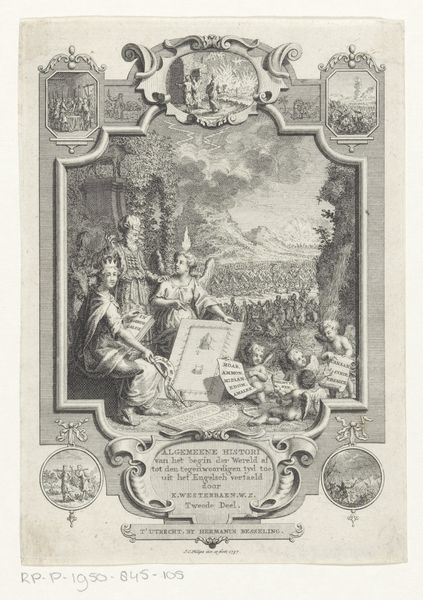
Allegorische voorstelling met Poëzie, Waarheid, Theofilus en Lucas de evangelist 1730
0:00
0:00
print, engraving
#
allegory
#
baroque
# print
#
figuration
#
line
#
history-painting
#
engraving
Dimensions: height 216 mm, width 168 mm
Copyright: Rijks Museum: Open Domain
Curator: Before us we have a print from 1730, entitled “Allegorical Representation with Poetry, Truth, Theophilus, and Luke the Evangelist.” It’s an engraving by Jan Caspar Philips, now held at the Rijksmuseum. Editor: It’s striking how the central figures almost glow, drawing your eye in, even amidst the intricate border with those miniature scenes. There’s a real sense of enlightenment radiating outwards. Curator: Yes, it's fascinating how Philips intertwines classical allegory with biblical narrative. You've got Poetry, identified with her lyre, Truth, and then the figures of Theophilus and Luke from the New Testament. Philips creates a visual link between artistic inspiration, divine truth, and scripture. The composition seems structured to communicate a very clear, almost pedagogical message. Editor: I’m particularly drawn to those peripheral images framed within the elaborate border. Each depicts what appears to be a different scene from the Acts of the Apostles – little windows into pivotal biblical events. Look how they encircle the main allegorical scene, rooting the abstractions of truth and poetry within the concrete narratives of Christian history. It's almost like a visual timeline or story board surrounding the center. Curator: Precisely. And consider that prints like this would have circulated widely, influencing public understanding and reinforcing established theological and political ideas. These weren’t neutral images; they were active participants in shaping beliefs and consolidating power structures. We see a desire to give clear historical references through the circular images surrounding the main allegorical scene. Editor: Indeed, even the choice of allegory—Truth, Poetry—these are highly loaded symbols. Poetry here isn’t just art for art's sake. It’s about divinely inspired creation, carrying moral and spiritual authority. Curator: Absolutely. It shows the period’s insistence on didacticism; on art’s social and political role. It's interesting to note the historical context: these kind of prints would often appear as frontispieces for books. Here the title at the center states that the print alludes to the book by Hendrik Fouree on the “Acts of the Apostles”. It reflects an interesting marketing and symbolic role for the art. Editor: Looking closely at those border vignettes now – their round shape and placement evoke the feeling of coins or emblems... They remind us of the constant currency of these images and stories in cultural and spiritual life. I notice also the Roman numerals and text in each medallion. Curator: Yes! An entire visual language intended for specific interpretation and acceptance within a carefully controlled socio-political context. Thank you for offering your perceptive view on it! Editor: Thank you; it helps me to observe the historical agency of the image anew.
Comments
No comments
Be the first to comment and join the conversation on the ultimate creative platform.

